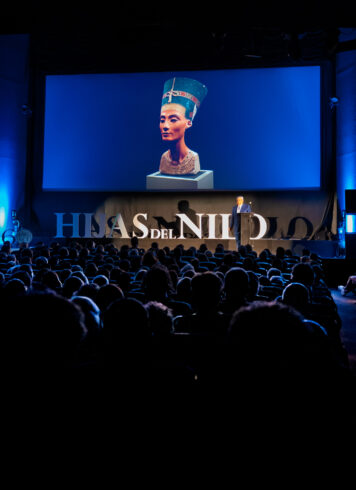Known Egyptologist Zahi Hawass has recently claimed that he is certain that a mummy he is currently working on will turn out to be Queen Nefertiti's.
Egyptologist is an archaeologist specializing in studying ancient Egypt, according to Cambridge University in London.
Zahi Hawass has been studying the rich Egyptian history and excavating ancient tombs for decades; he previously served as the Minister of State for Antiquities Affairs in Egypt.
He is currently working on an exhibition, "Daughters of the Nile," focusing on women during pharaonic Egypt.
Hawass claimed that he is certain that he'll be revealing Nefertiti's mummy in a month or two, as he told the statement in an interview with El Independiente, a Spanish newspaper.
Other important ancient Egyptian mummies have been discovered, and Queen Nefertiti's remains are yet to be identified.

Finding Nefertiti
Queen Nefertiti, also addressed as Neferneferuaten Nefertiti, lived between 1370 and 1330 BC, and was married to the Pharaoh Akhenaten. Nefertiti was the queen of ancient Egypt, of its great wealth, and she was the mother of Tutankhamun, also referred to as King Tut.
It is believed that after Pharaoh Akhenaten died, Queen Nefertiti ruled ancient Egypt, although others disagree. However, Hawass is one such believer.
Hawass said, "I am still looking for two things: [Nefertiti's] grave and her body." He added that she governed ancient Egypt for three years after her husband's burial under Smenkhkare.
We already have DNA from the 18th dynasty mummies," Hawass exclaimed.
Their team has the mummies from Akhenaten to Amenhotep II or III. There are also unnamed mummies labeled as KV21a and KV21b.
Hawass mentioned that they would let the world know about the discovery of the mummy of Ankhesenamun, Tutankhamun's spouse, and her mother, Nefertiti.
Their team also excavated KV35, the mummy of a 10-year-old boy. They believed that mummy was Tutankhamun's brother and Akhenaten's son.
The dilemma posed by Nefertiti will be solved, Hawass added.
Hawass and his team are sure that they will reveal which of the unnamed mummies could be the body of Nefertiti.

Read also: Ancient Egypt Achievements: Top 5 Prehistoric Inventions Humans Find Impressive Until at Present
Mummification: Ancient Burial
According to the Smithsonian Museum, ancient Egypt mummified the bodies of the most important names in a long process that usually took up to 70 days.
The mummification process starts by removing all internal organs from the body except the heart to slow decay, using specialized hooked instruments to pull the brain out in chunks from the nose.
The internal organs were put into another container and buried with the body. After the first step, the body was completely dehydrated by a special salt called natron, which is coated inside the body. After the two major steps, the bodies will be wrapped in linen and placed inside the tomb.
Despite the great intrigue and research for more than a century, it is thought that there are still a huge number of undiscovered mummies and treasures from Ancient Egypt.
The Undiscovered Mummies
Hawass said that their team barely found 30% of everything underground. A few days ago, their mission found tombs inside several houses in Alexandria, a modern city in Egypt. He explained that modern Egypt was built on the Ancient, which answers the remaining percentage of underground Egyptian discoveries.
Hawass added that climate change can greatly threaten the conservation of the Egyptian heritage and urged the masses to equip everyone to take action to protect the tombs and temples.
Hawass suggests that the only way to preserve the history of Egypt is to control the tomb's entrance every year.
Hawass said that "tourism is the enemy of archaeology," and needs to have limitations between preserving the economy and heritage.
RELATED ARTICLE : Ancient Egyptian Child Mummified 2,000 Years Ago Discovered with Bandaged Leg, Gives Insights to Old-Fashioned Medical Practices
Check out for more news and information on Climate Change and Ancient Egypt at Science Times.
© 2025 ScienceTimes.com All rights reserved. Do not reproduce without permission. The window to the world of Science Times.












